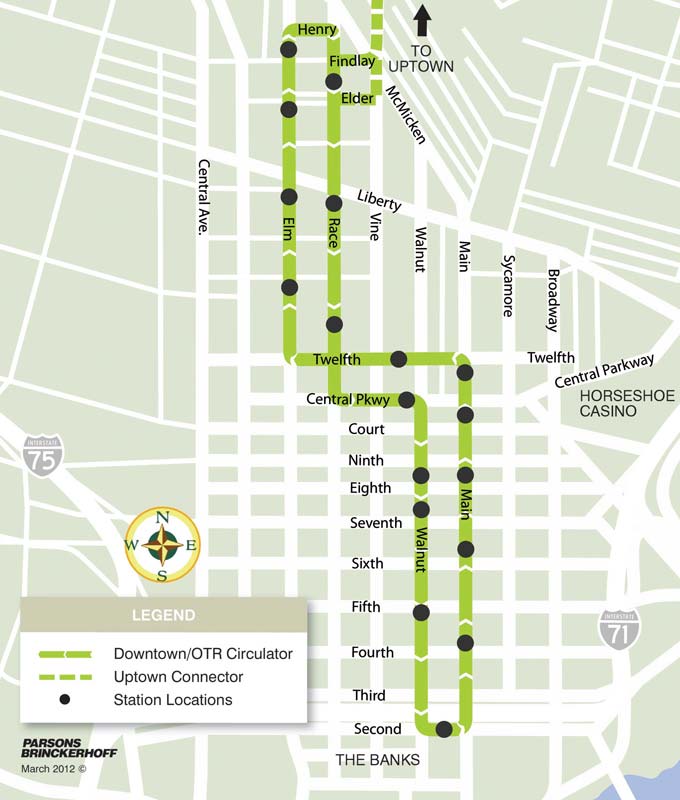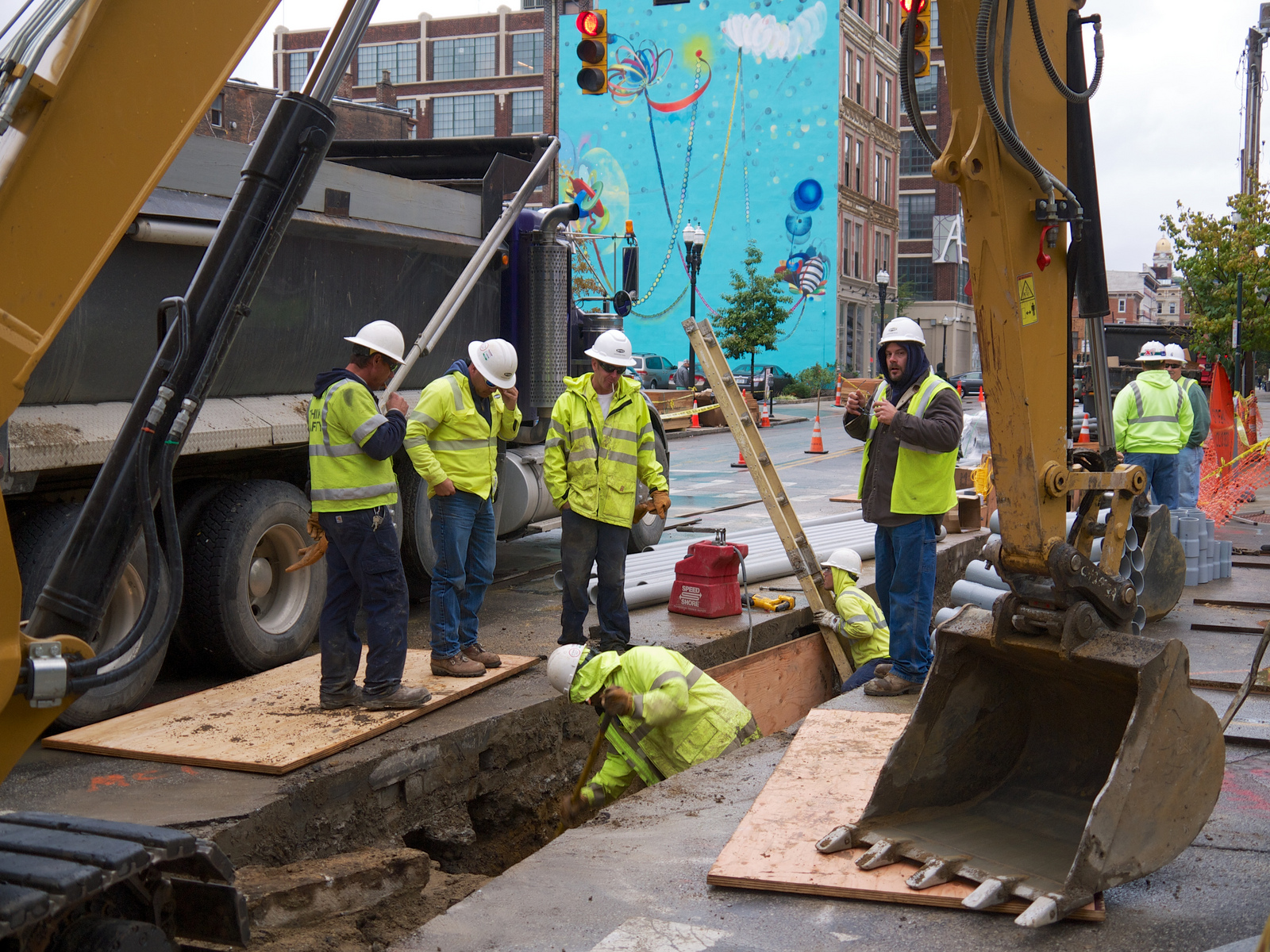 The Business Courier reported yesterday that Hamilton County Common Pleas Judge Carl Stich (R) ruled that the City of Cincinnati must pay for the relocation of Duke Energy’s utilities along the first phase of the Cincinnati Streetcar system.
The Business Courier reported yesterday that Hamilton County Common Pleas Judge Carl Stich (R) ruled that the City of Cincinnati must pay for the relocation of Duke Energy’s utilities along the first phase of the Cincinnati Streetcar system.
As learned from a leaked internal memo last December, this decision was expected by city officials who will now be on the hook for an additional $15 million in costs – expenses that will be covered by the project’s existing contingency fund.
In Stich’s ruling, he cited an Ohio Supreme Court case from 1955, Speeth v. Carney, that stated government-owned transit systems are proprietary functions, not government ones. This is important because that is what lays the foundation for Stich’s ruling, but also sets a potentially far-reaching precedence for what costs local governments are expected to bear when making infrastructure investments.
As a result, former city solicitor John Curp says that Cincinnati should appeal the ruling.
“The troubling element of the ruling for local governments is that the court looked under the hood of the streetcar and based its decision on one debated effect of the project rather than principal operation of the project, which is transportation,” Curp told the Business Courier – an UrbanCincy content partner. “Nearly every government project is justified as an economic development project. If applied more broadly, this decision could add significant costs to local government infrastructure projects.”
Cincinnati City Manager Harry Black seems to agree, and says that the city will in fact appeal the ruling.
Furthermore, Judge Stich did address the fact that the rulings used to make his decision were quite old and rendered during a time when private companies owned and operated public transit systems. This is a notable difference from today where that is largely non-existent, and would seemingly change the entire discussion in a case of this nature.
“The court noted that the case it found controlling was an anachronism to a bygone era where private companies ran public transportation,” Curp said. “The current reality is that government heavily subsidizes almost all forms of public transportation. No one mistakes public transportation as a proprietary, money-making venture. An appeal would help ensure that all local governments are working on equal footing and none have a competitive advantage on costs for new infrastructure projects”
In addition to Duke Energy, there are a half-dozen other utility companies that are within the project area, but all of those companies had come to terms with the City prior to the commencement of construction. The question now is what financial obligations, if any, those companies will have on future infrastructure projects pursued by City Hall.
Furthermore, the decision shines an interesting light on how infrastructure projects and their associated costs are rarely neatly defined. These utility costs, for example, are being covered through the budget for the streetcar, but have nothing to do with rail transit. In fact, a large sum of the budget for the Cincinnati Streetcar is actually allocated to things that have nothing to do (e.g. buried utilities, utility upgrades and relocations, and road resurfacing) with the direct construction or operation of the transit system.
The project, however, brings up a very convenient and cost-effective time in which to make such improvements. As has been discovered thus far, many of these improvements have been sorely needed. In Over-the-Rhine, for example, broken water mains, wooden pipes and other outdated infrastructure has been discovered and either repaired or upgraded as a result of the project.
This is a coup for any utility company that can have the cost of upgrading their systems shouldered by the taxpayers, instead of their ratepayers, as such is the case in this Duke Energy example.
Since much of the costs for the project are related to non-streetcar items, it seems to lean toward Curp’s concern of the ruling being applied more broadly.
“The case is also important for other cities in Ohio,” said City Manager Black. “The decision may ultimately dictate who pays for local infrastructure improvements that require the movement of utilities on public property: the taxpayers or the utility.”
With an appeal forthcoming, it appears that lawyers will continue to reap the benefits of this political battle. Meanwhile, construction progresses on the Cincinnati Streetcar project on-time and on-budget.



